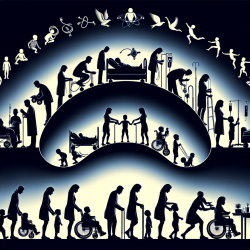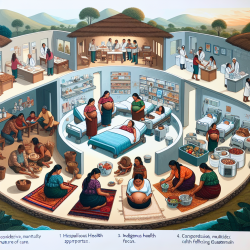Empowering Futures: Harnessing Rehabilitation for Congenital Conditions
The landscape of child health is evolving, with a growing emphasis on not just survival, but thriving. This shift is particularly crucial for children with congenital conditions who require rehabilitation. The research article, "Provision of rehabilitation for congenital conditions," underscores the importance of integrating rehabilitation into health systems, particularly in low- and middle-income countries. This blog explores how practitioners can enhance their skills by implementing the findings of this research.
The Importance of Early Intervention
Early intervention is pivotal for children with congenital anomalies. The research highlights that congenital conditions, such as clubfoot and limb reduction, benefit significantly from early rehabilitation. Early detection and intervention can optimize a child's quality of life, ensuring they have the best possible start. Practitioners should prioritize early assessment and referral to rehabilitation services, which can prevent long-term impairments and enhance developmental outcomes.
Integrating Rehabilitation into Health Systems
The integration of rehabilitation services into primary health care is a strategic focus that can strengthen health systems overall. By embedding rehabilitation within primary care, practitioners can ensure that children with congenital anomalies receive timely and appropriate care. This integration requires training healthcare workers, including nurses and midwives, to recognize congenital conditions at birth and provide accurate parent education.
Overcoming Barriers to Access
Access to rehabilitation services remains a significant challenge, particularly in low- and middle-income countries. Practitioners can play a crucial role in overcoming these barriers by understanding the pathways families take to engage with services and the obstacles they face. Designing educational resources with input from caregivers can enhance service accessibility and engagement.
Building Capacity and Expertise
To meet the growing demand for rehabilitation services, practitioners must focus on building capacity and expertise within the healthcare system. This involves promoting the education of healthcare providers and increasing the sensitization of health workers to the needs of children with congenital conditions. Such efforts can lead to higher referral rates and better information dissemination to parents.
Argentina: A Case Study in Success
Argentina serves as a model for integrating rehabilitation into health systems. The National Network of Congenital Anomalies of Argentina demonstrates how a comprehensive systems-level approach can improve care for children with congenital anomalies. By collaborating with public and private maternity hospitals, Argentina has increased the number of affected children referred to services and trained more healthcare providers.
The Path Forward
Practitioners are encouraged to advocate for policies that support the integration of rehabilitation into health systems. By aligning with global frameworks such as WHO's Rehabilitation 2030, practitioners can help shape health expenditure and development assistance. This alignment will ensure that rehabilitation services are accessible and prioritized within child health.
To delve deeper into the research and explore the full potential of rehabilitation for congenital conditions, practitioners are encouraged to read the original research paper. Provision of rehabilitation for congenital conditions.










